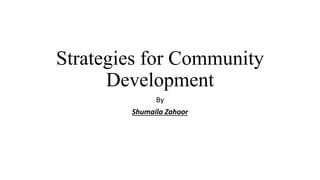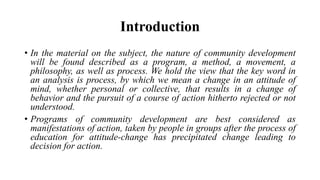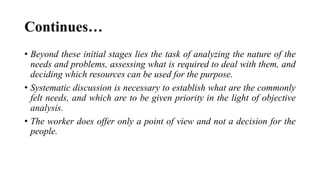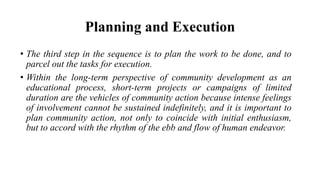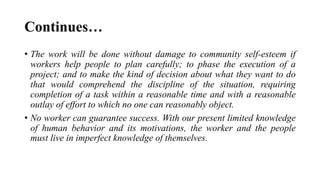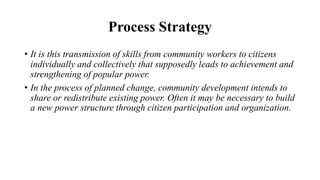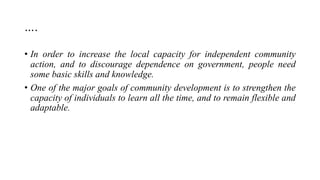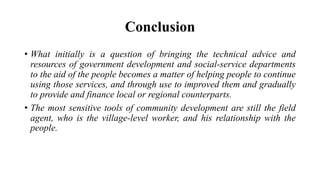The document outlines the key steps and strategies involved in community development processes. It discusses that community development is an educational process that helps communities change attitudes and behaviors to improve conditions. The main steps described are initial contact and rapport building, systematic discussion of issues, planning and executing action projects, and concluding projects with evaluation. It also discusses various strategies used like collaborative participation, action research, education, empowering community leadership, and ensuring community self-sufficiency through skills development. The goal is for communities to improve with less dependence on outside assistance over time.
